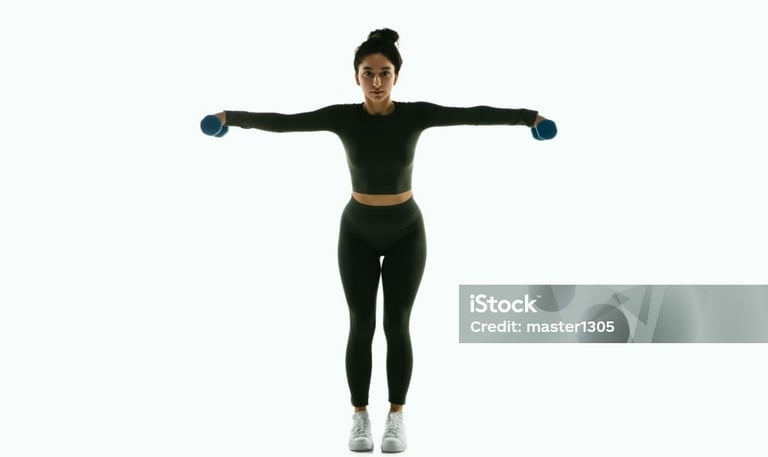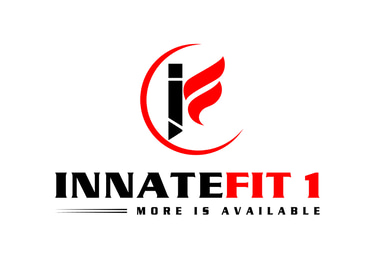Visit Innatefit1.com for exercise wear and equipment!!!
Unleash Your Body's Symphony: Mastering Movement Through the Four Cardinal Dimensions
Master functional movement for daily activities and unlock your body's full potential.
SELF-HELPWORKOUTSHEALTHY LIFESTYLEFITNESS TIPSSTRENGTH TRAININGHEALTH
Joseph Battle
7/17/20259 min read


Introduction
Have you ever considered that your body is a finely tuned instrument, capable of an incredible range of motion? To truly unlock your full potential, you must understand and train the four planes of movement. These planes are fundamental to how your body navigates the world.
They dictate the directions in which we can move, providing the framework for every action, from walking and running to reaching for an object or performing complex athletic feats. By understanding and utilizing these planes, you can significantly improve your movement efficiency, reduce your risk of injury, and enhance your overall physical capabilities.
This comprehensive guide explores the four planes of movement, highlighting the importance of training in all of them. We will examine each plane individually, detailing the types of movements it encompasses and its significance in both daily activities and athletic endeavors.
Furthermore, we will provide you with practical exercises designed to integrate all four planes into your workouts, equipping you with the knowledge and tools to transform your approach to fitness and unlock your body's full movement potential.
Deciphering the Dimensions: A Deep Dive into the Four Planes of Motion
Understanding the Four Planes of Movement
The human body moves in three dimensions, but for simplicity and effectiveness in training, we often break movement down into the four planes of motion fitness. These planes include the sagittal, frontal, and transverse planes, as well as their combinations. Each plane represents a different orientation and direction of movement, contributing to a comprehensive and well-rounded training program.
Consider the four planes of motion as the blueprints for movement. They guide how we move through space, providing a structure for our actions. Without understanding these planes, we may limit our range of motion, potentially leading to imbalances and increasing the risk of injury.
By actively training in all four planes, you can develop a more robust and resilient physique, one that is better equipped to handle the demands of daily life and athletic performance.
The Sagittal Plane: The Forward and Backward Dance
The sagittal plane, also known as the anteroposterior plane, divides the body into left and right halves. Movements in this plane occur forward and backward. Think of it as the primary plane for everyday movements, such as walking and running.
Movements within this plane include flexion (bending), extension (straightening), and hyperextension (excessive straightening).
Definition and Examples of Movements: The sagittal plane encompasses movements such as squats (bending and straightening the knees), lunges (stepping forward and bending the knees), bicep curls (bending and straightening the arm at the elbow), and push-ups (lowering and raising the body). These actions involve movement in a forward and backward direction, such as bringing your arms forward or moving your legs.
Importance in Daily Activities and Sports: This plane is the foundation of many everyday activities. Walking, running, climbing stairs, and reaching for objects are all primarily movements in the sagittal plane. In sports, the sagittal plane is dominant in activities such as sprinting, cycling, swimming, and throwing motions. A strong and efficient sagittal aircraft is crucial for fundamental movements and athletic performance.
The Frontal Plane: The Side-to-Side Symphony
The frontal plane, also known as the coronal plane, divides the body into front and back halves. Movements in this plane involve lateral motions, or movements from side to side. It is essential for balance, stability, and coordinated movements.
Movements within this plane include abduction (moving a limb away from the midline of the body) and adduction (moving a limb towards the midline).
Definition and Examples of Movements: The frontal plane encompasses movements like side lunges (stepping to the side), lateral raises (lifting the arms out to the sides), side bends (bending to the side), and jumping jacks (moving the arms and legs outwards simultaneously). These exercises challenge stability and require the body to control movement in a lateral direction.
Importance in Daily Activities and Sports: The frontal plane is essential for balance and stability. Activities such as stepping sideways, carrying objects on one side, or navigating uneven terrain rely heavily on frontal plane movements. In sports, it is crucial for activities like skating, skiing, and changing direction quickly, enabling athletes to move laterally with ease.
The Transverse Plane: The Rotational Rhapsody
The transverse plane, also known as the horizontal plane, divides the body into upper and lower halves. Movements in this plane involve rotation. This plane is critical for rotational power, core strength, and generating force through the body.
Movements within this plane include rotation (turning around an axis) and circumduction (circular movement).
Definition and Examples of Movements: The transverse plane governs movements like Russian twists (rotating the torso), woodchoppers (twisting and reaching across the body), and medicine ball rotations (rotating the torso while holding a medicine ball). These movements emphasize rotational strength and core stability.
Importance in Daily Activities and Sports: The transverse plane is crucial for rotational movements in sports and daily activities. Reaching for something behind you, twisting to look over your shoulder, and getting in and out of a car are examples of transverse plane movements. Sports like golf, baseball, tennis, and hockey rely heavily on rotational power and core stability.
Combination of Planes: The Integrated Motion
The body rarely moves in a single plane. Complex movements often require a combination of different planes, creating diagonal and rotational patterns. This integrated approach is essential for achieving functional movement and optimal athletic performance. These are movements that combine multiple planes of motion, such as a diagonal lunge.
Explanation of Diagonal and Rotational Movements: Diagonal movements combine actions from multiple planes, creating complex patterns of motion. For example, a diagonal lunge involves forward, lateral, and rotational elements.
Rotational movements are crucial for generating power and enhancing efficiency. These movements, such as a medicine ball throw, combine rotation, flexion, and extension.
Importance in Daily Activities and Sports: Training in multiple planes simultaneously prepares the body for real-world movements, enhancing functional movement for daily activities. Reaching for something while turning, carrying groceries while walking, and reacting to unexpected movements all require multi-planar coordination.
In sports, these types of movements are highly common in many sports, requiring players to move with agility and efficiency.
Elevating Your Potential: Unveiling the Plane of Motion Training Benefits
Benefits of Training All Four Planes of Movement
Training in all four planes of movement offers a wealth of benefits, transforming your physical capabilities and overall well-being. From improving movement efficiency to reducing the risk of injury and enhancing athletic performance, the advantages are numerous and far-reaching.
By understanding and integrating the four planes of movement into your training regimen, you can unlock a new level of functional fitness and empower your body to perform at its best, regardless of your activity or goals.
A. Improved Overall Movement Efficiency
Training across all four planes of movement improves the efficiency of your movements. Your body learns to coordinate muscles across different planes, improving overall movement patterns. This coordination optimizes energy expenditure and reduces unnecessary strain on joints and muscles.
By developing a balanced approach to movement, you minimize the risk of imbalances and movement inefficiencies. This improved efficiency translates into smoother, more controlled motions in daily activities and athletic endeavors.
B. Enhanced Athletic Performance
Athletes benefit significantly from training in all four planes of movement. This approach enhances power, agility, and balance, crucial for success in many sports. Multi-planar training prepares the body for the dynamic and unpredictable demands of competition.
By developing a robust and well-rounded physical foundation, athletes can experience improved performance, reduced risk of injury, and a greater ability to excel. Training across all four planes is a cornerstone of advanced athletic conditioning, allowing athletes to move with greater speed, power, and precision.
C. Reduced Risk of Injury
Training in a variety of planes helps develop a balanced physique, reducing the risk of injury. It strengthens muscles that support and stabilize joints in different directions. Addressing imbalances, which can result from focusing on one plane, reduces the strain on specific areas.
A comprehensive training program helps prevent injuries by building a more resilient and adaptable body. Focusing on exercise and plane anatomy ensures that the body is prepared for various movements, improving overall stability.
D. Better Functional Movement for Daily Activities
Training across the four planes of movement supports functional movement for daily activities. It allows the body to perform various tasks efficiently and safely. This type of training prepares the body for everyday tasks and helps prevent injury while improving overall performance in daily activities.
By prioritizing a multi-planar approach, you are investing in your long-term health and mobility. It reduces the physical strain of everyday life, making it easier to perform basic tasks.
Crafting Your Movement Masterpiece: Exercises to Train All Four Planes
Exercises to Train All Four Planes of Movement
Integrating all four planes of movement into your exercise routine is essential for comprehensive fitness. Include exercises that target each plane to achieve a balanced workout, building strength, stability, and mobility in all directions.
Here are exercises categorized by plane to help you create a well-rounded and effective training program:
A. Sagittal Plane Exercises: The Forward-and-Backward Movers
Focus on movements that move your body forward and backward. These exercises primarily target the muscles involved in flexion and extension.
Squats: Squats are a fundamental exercise. They work the quadriceps, hamstrings, and glutes. Stand with feet shoulder-width apart, lower your body as if sitting in a chair, and then return to the starting position. This engages the sagittal plane through flexion and extension of the knees and hips.
Lunges: Lunges are an excellent exercise for working the legs and glutes. Step forward with one leg, lowering your body until both knees are bent at a 90-degree angle. Push back to the starting position. This focuses on forward and backward movement.
Push-ups: Push-ups are an excellent exercise for working the chest, shoulders, and triceps. They involve lowering the body towards the ground and then pushing back up. They engage the sagittal plane through flexion and extension of the elbows.
B. Frontal Plane Exercises: The Side-to-Side Specialists
These exercises focus on lateral movements, strengthening the muscles responsible for side-to-side motion and stability.
Side Lunges: Side lunges work the inner and outer thighs. Step to the side, lowering your body as you bend your leading knee. Push back to the starting position. This moves the body laterally.
Lateral Raises: Lateral raises work the shoulders. Stand with feet shoulder-width apart and lift your arms out to the sides. This exercise promotes lateral movement and strengthening of the shoulder muscles.
Side Plank: Side planks build core strength and stability. Lie on your side, prop yourself up on your forearm, and hold your body in a straight line. This involves isometric exercises that challenge the body’s frontal plane.
C. Transverse Plane Exercises: The Rotational Rebels
These exercises challenge the core and emphasize rotational strength and stability.
Russian Twists: Russian twists strengthen the core. Sit with your knees bent and feet off the floor. Twist your torso from side to side, keeping your hands in contact with the ground. These movements enhance rotational strength.
Woodchoppers: Woodchoppers work the core and obliques. Stand with feet shoulder-width apart, holding a weight. Bring the weight across your body from one side to the other in a chopping motion. This mimics rotational movements.
Medicine Ball Rotations: Medicine ball rotations are similar to Russian twists but use a medicine ball. Rotate your torso while holding a medicine ball to enhance core strength and stability. This is a great way to strengthen the obliques.
D. Combination of Planes Exercises: The Integrated Approach
These exercises combine multiple planes of motion, challenging the body in dynamic and functional ways.
Diagonal Lunges: Diagonal lunges combine forward, lateral, and rotational movements. Step forward and to the side, rotating your torso as you lunge. This engages multiple planes of motion.
Rotational Medicine Ball Throws: Rotational medicine ball throws require a dynamic and integrated approach. Rotate your torso and throw the medicine ball against a wall or to a partner. This combines multiple planes of movement.
Bear Crawls: Bear crawls are a full-body exercise that engages the entire body. Start on your hands and knees, moving forward while keeping your back straight and your knees slightly off the ground. This exercise combines multiple planes of motion, creating a functional exercise.
Integrating Dimensions: Tips for a Successful Multi-Planar Workout
Tips for Incorporating All Four Planes of Movement into Your Workout Routine
Integrating the four planes of movement into your workout requires a strategic and progressive approach. Here are some tips to help you structure your training effectively:
Start with Bodyweight Exercises: Begin with bodyweight exercises to learn proper form and establish a foundation of strength. Focus on mastering each movement before adding resistance. This ensures that your body is prepared for the demands of more advanced exercises.
Progress to Using Resistance or Weights: Once you have mastered bodyweight exercises, gradually introduce resistance or weights. Use dumbbells, resistance bands, or weight machines to further challenge your muscles. This progression builds strength and endurance.
Focus on Proper Form and Technique: Prioritize proper form and technique over the amount of weight lifted or the number of repetitions performed. This minimizes the risk of injury and maximizes the effectiveness of each exercise.
Incorporate Balance and Stability Exercises: Include exercises that challenge your balance and stability, such as single-leg exercises and those performed on unstable surfaces. This promotes better coordination and helps prevent falls.
By following these tips, you can create a comprehensive and effective workout routine that integrates all four planes of movement, promoting optimal movement potential and overall fitness.
Conclusion: Mastering the Symphony of Motion
Recap of the Importance of Training All Four Planes of Movement
Training in the four planes of movement is a cornerstone of comprehensive fitness. It enhances movement efficiency, improves athletic performance, reduces the risk of injury, and supports functional movement for daily activities. It's about understanding and working with the body's natural capabilities, not against them.
By integrating these exercises into your workouts, you are investing in a more robust, adaptable, and injury-resistant body. Embrace this approach and unlock a new level of physical potential.
Encouragement to Incorporate These Exercises into Daily Workouts for Optimal Movement Potential
The journey towards optimal movement potential is ongoing. Make training in all four planes of movement a part of your daily routine. Be creative with your workouts, listen to your body, and make adjustments as needed.
The path to a more functional and resilient physique lies in embracing the four planes of motion. Start incorporating these exercises into your routine today and experience the transformative power of movement.




